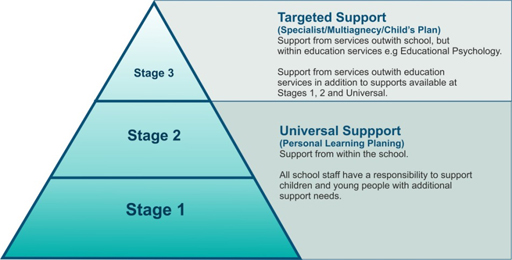4.2 Staged level of intervention
Module 1, Section 4.1 Recap
Staged intervention is used as a means of identification, assessment, planning, recording and review to meet the learning needs of children and young people. All local authorities have a staged intervention and assessment process in place which enables practitioners to assess and meet learners’ needs, including dyslexia. Staged intervention:
- Provides a solution-focused approach to meeting needs at the earliest opportunity and with the least intrusive level of intervention.
- Involves the child, parents/carers, school staff and, at some levels, other professionals. All working in partnership to get it right for every child.
Staged intervention is designed to be flexible and allows for movement between stages depending on progress. There are variations between local authorities regarding the number of stages within their process - the diagram below highlights 3 stages. The majority of learners with dyslexia will be supported within Universal support. Further details can be found on the Addressing Dyslexia Toolkit within the Supporting Learners section.
4.1.5 Equality/Disability

